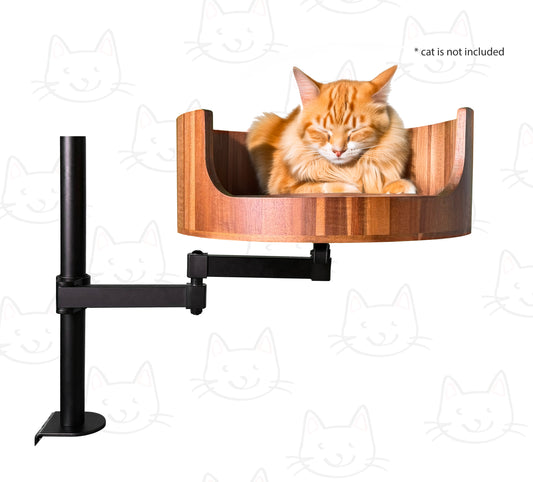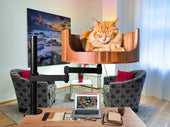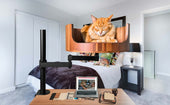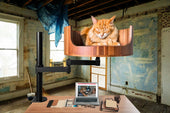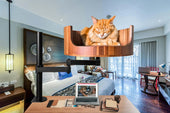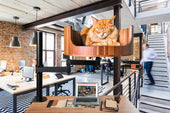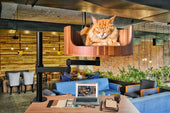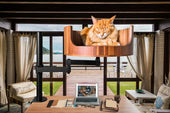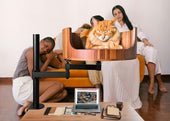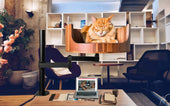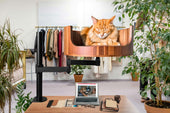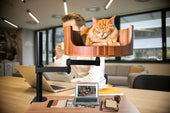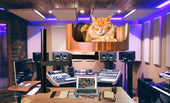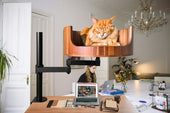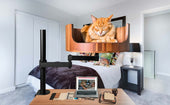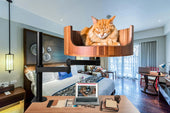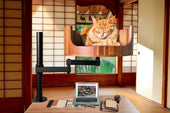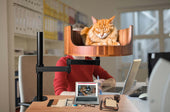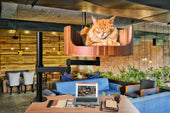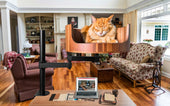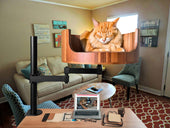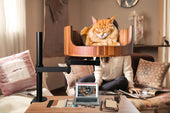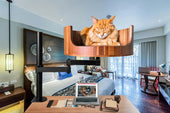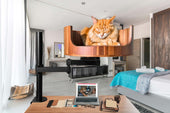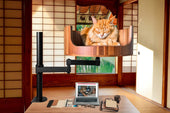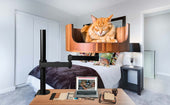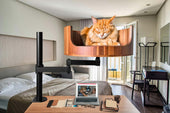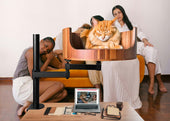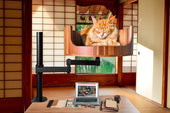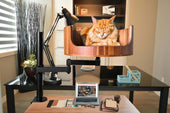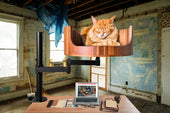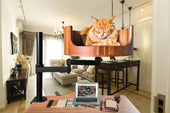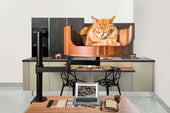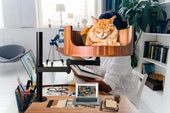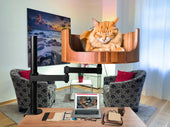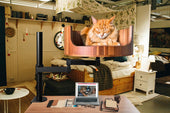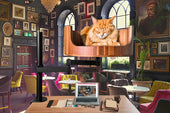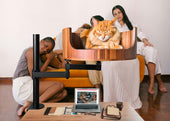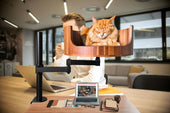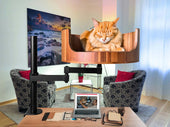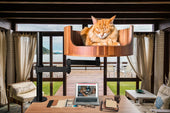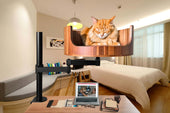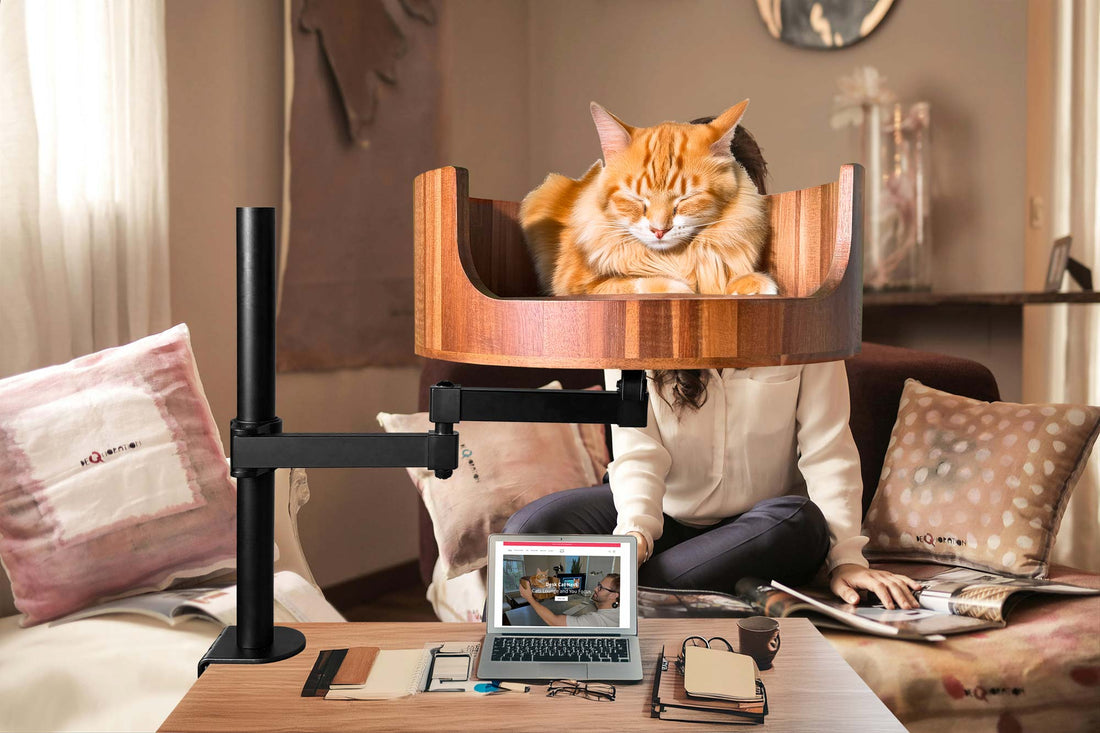
Can My Cat Eat Cardboard? Understanding the Risks
Share
Have you ever caught your cat nibbling on a piece of cardboard and wondered if it's safe for them to eat? Many cat owners have experienced this puzzling behavior, raising concerns about the potential risks associated with their feline friends ingesting non-food items. In this article, we will explore the question: Can my cat eat cardboard? We will delve into the reasons behind this strange habit, the potential dangers of consuming cardboard, and how you can prevent your cat from snacking on this seemingly harmless material.
One popular cardboard item that cats are often drawn to is the Desk Cat Nest, a cozy hiding spot made of durable cardboard that serves as a comfortable resting place for your furry companion. While the Desk Cat Nest provides a safe and inviting space for your cat to relax, it also raises questions about the potential health risks associated with cardboard consumption. As we examine the topic further, we will discuss the digestive implications of ingesting cardboard, the risk of intestinal blockages, and ways to discourage your cat from chewing on this tempting material. Stay tuned as we unravel the mysteries of feline behavior and provide valuable insights into keeping your cat healthy and happy.
1. Cats chewing on cardboard is a common behavior, but ingesting large amounts can be harmful.
2. Cardboard can cause intestinal blockages in cats if consumed in large quantities.
3. Monitor your cat's behavior around cardboard and seek veterinary attention if they show signs of illness after ingesting it.
4. Providing safe alternatives like cat grass or chew toys can help deter your cat from eating cardboard.
5. Understanding the risks of cats eating cardboard can help you keep your feline friend safe and healthy.
Why do cats like eating cardboard?
Cats may chew or eat cardboard due to several reasons, such as pica, a condition where animals crave non-food items. Cardboard may also mimic the texture of grass, making it appealing to cats. Additionally, the act of chewing on cardboard may help maintain dental health by reducing tartar buildup and keeping teeth clean.
Is cardboard safe for cats to eat?
While small amounts of cardboard may not harm your cat, ingesting large quantities can lead to gastrointestinal blockages. These blockages can be life-threatening and may require surgery to remove the obstruction. In addition, certain types of cardboard may contain chemicals or adhesives that are toxic to cats if ingested.
Signs to look out for if your cat eats cardboard
If your cat has ingested cardboard, keep an eye out for symptoms such as vomiting, diarrhea, lethargy, loss of appetite, or abdominal pain. If you notice any of these signs, contact your veterinarian immediately for further guidance and potential treatment options.
How to prevent your cat from eating cardboard
To prevent your cat from eating cardboard, provide alternative chewing options such as cat toys, dental treats, or chew sticks. Keep cardboard boxes out of reach and consider using deterrent sprays or double-sided tape to discourage chewing. Additionally, ensure your cat has a balanced diet and enough mental and physical stimulation to prevent boredom-related behaviors like chewing on non-food items.
Frequently Asked Questions
Can my cat eat cardboard?
While some cats may be interested in nibbling on cardboard, it is not safe for them to consume. Cardboard can cause digestive issues such as blockages and irritation in the stomach and intestines. It is best to discourage your cat from eating cardboard and provide safe and appropriate chew toys instead.
Why does my cat want to eat cardboard?
Cats may be attracted to cardboard due to its texture, scent, or simply out of curiosity. Some cats may chew on cardboard as a way to relieve stress or boredom. It is important to provide your cat with appropriate outlets for chewing and play to prevent them from ingesting harmful materials.
What are the potential risks of my cat eating cardboard?
If your cat ingests cardboard, it can lead to gastrointestinal issues such as vomiting, diarrhea, and blockages. In severe cases, surgery may be required to remove the blockage. It is important to monitor your cat's behavior and prevent them from gaining access to cardboard to ensure their safety.
How can I prevent my cat from eating cardboard?
To prevent your cat from eating cardboard, make sure to keep all cardboard out of reach. Provide your cat with safe and appropriate toys and objects to chew on, such as catnip toys, dental chews, or puzzle feeders. Additionally, engaging your cat in interactive play and providing plenty of mental stimulation can help redirect their attention away from chewing on cardboard.
In conclusion, providing your feline friend with a Desk Cat Bed is a valuable choice to prevent them from eating cardboard. Not only does the bed offer a safe and comfortable resting place for your cat, but it also keeps them away from potentially harmful materials like cardboard. By investing in a Desk Cat Bed, you can ensure the health and well-being of your beloved pet while also giving them a cozy spot to relax and nap.

